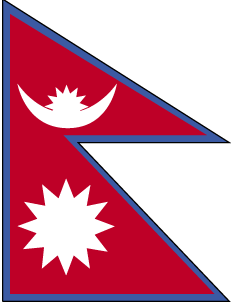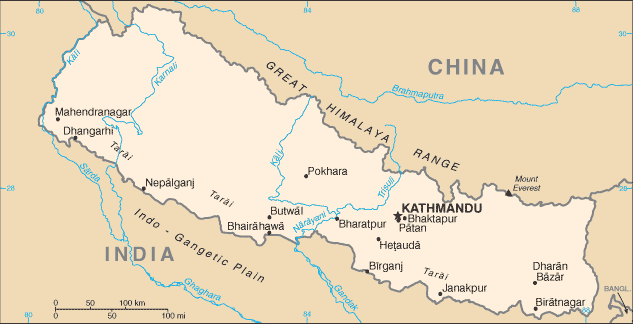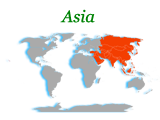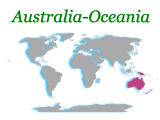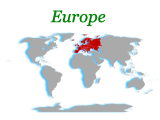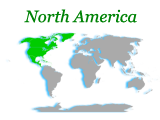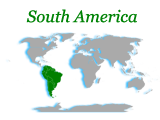In 1951, the Nepalese monarch ended the century-old system of rule by hereditary premiers and instituted a cabinet system of government. Reforms in 1990 established a multiparty democracy within the framework of a constitutional monarchy. An insurgency led by Maoist extremists broke out in 1996. The ensuing ten-year civil war between insurgents and government forces witnessed the dissolution of the cabinet and parliament and assumption of absolute power by the king. Several weeks of mass protests in April 2006 were followed by several months of peace negotiations between the Maoists and government officials, and culminated in a November 2006 peace accord and the promulgation of an interim constitution. Following a nation-wide election in April 2008, the newly formed Constituent Assembly declared Nepal a federal democratic republic and abolished the monarchy at its first meeting the following month. The Constituent Assembly elected the country's first president in July. The Maoists, who received a plurality of votes in the Constituent Assembly election, formed a coalition government in August 2008, but resigned in May 2009 after the president overruled a decision to fire the chief of the army staff.
Population
28,951,852 (July 2010 est.)
Country comparison to the world:43
Nationality
Noun:Nepalese (singular and plural)
Adjective:Nepalese
Ethnic groups
Chhettri 15.5%, Brahman-Hill 12.5%, Magar 7%, Tharu 6.6%, Tamang 5.5%, Newar 5.4%, Muslim 4.2%, Kami 3.9%, Yadav 3.9%, other 32.7%, unspecified 2.8% (2001 census)
Religions
Hindu 80.6%, Buddhist 10.7%, Muslim 4.2%, Kirant 3.6%, other 0.9% (2001 census)
Languages
Nepali 47.8%, Maithali 12.1%, Bhojpuri 7.4%, Tharu (Dagaura/Rana) 5.8%, Tamang 5.1%, Newar 3.6%, Magar 3.3%, Awadhi 2.4%, other 10%, unspecified 2.5% (2001 census)
note: many in government and business also speak English (2001 est.)
Country Name
Conventional long form:Federal Democratic Republic of Nepal
Conventional short form:Nepal
Local long form:Sanghiya Loktantrik Ganatantra Nepal
Local short form:Nepal
Government Type
federal democratic republic
Capital
Name: Kathmandu
Geographic coordinates:27 43 N, 85 19 E
Time difference:UTC+5.75 (10.75 hours ahead of Washington, DC during Standard Time)
Administrative divisions
14 zones (anchal, singular and plural); Bagmati, Bheri, Dhawalagiri, Gandaki, Janakpur, Karnali, Kosi, Lumbini, Mahakali, Mechi, Narayani, Rapti, Sagarmatha, Seti
Independence
1768 (unified by Prithvi Narayan SHAH)
National Holiday
Republic Day, 29 May; Democracy Day, 24 April
Constitution
15 January 2007 (interim Constitution); note - in April 2008, a Constituent Assembly was elected to draft and promulgate a new constitution by May 2010
Legal system
based on Hindu legal concepts and English common law; has not accepted compulsory ICJ jurisdiction
Suffrage
18 years of age; universal
Executive branch
Chief of state:President Ram Baran YADAV (since 23 July 2008); Vice President Paramananda JHA (since 23 July 2008)
Head of government:Prime Minister Madhav Kumar NEPAL (since 25 May 2009); Deputy Prime Ministers Bijay Kumar GACHHADAR and Sujata KOIRALA
Cabinet:cabinet was formed in May 2009 by a majority coalition made up of the Communist Party of Nepal-United Marxist-Leninist, Nepali Congress, Madhesi People's Rights Forum, Nepal-Democratic, and several smaller parties
(For more information visit the World Leaders website)
Elections:president elected by Parliament; term extends until the new constitution is promulgated; election last held on 21 July 2008; date of next election NA
Election results:Ram Baran YADAV elected president by the Constituent Assembly in a second round of voting on 21 July 2008; Ram Baran YADAV 308, Ram Jaja Prasad SINGH 282
Legislative branch
unicameral Constituent Assembly (601 seats; 240 members elected by direct popular vote, 335 by proportional representation, and 26 appointed by the Cabinet (Council of Ministers)
Elections:last held on 10 April 2008 (next to be held NA)
Election results:percent of vote by party - CPN-M 38%, NC 19%, CPN-UML 19%,Madhesi People's Right Forum 9%, Terai-Madhes Democratic Party and Sadbhawana Party 5%, other 15%; seats by party - CPN-M 220, NC 110, CPN-UML 103, Madhesi People's Rights Forum 52, Terai-Madhes Democratic Party 20, Sadbhawana Party 9, other smaller parties 56; note - 26 seats filled by the new Cabinet and are included in the seat totals above
Judicial branch
Supreme Court or Sarbochha Adalat (the president appoints the chief justice on recommendation of the Constitutional Council; the chief justice appoints other judges on the recommendation of the Judicial Council)
Political Parties and Leaders
Chure Bhawar Rastriya Ekata Party [Keshav Prasad MAINALI]; Communist Party of Nepal (Maoist) [Matrika YADAV]; Communist Party of Nepal (ML) [C.P. MAINALI]; Communist Party of Nepal (Unified) [Raj Singh SHRIS]; Communist Party of Nepal (United) [Chandra Dev JOSHI]; Communist Party of Nepal/United Marxist-Leninist or CPN/UML [Jhalanath KHANAL]; Dalit Janajati Party [Vishwendraman PASHWAN]; Madhesi People's Rights Forum, Nepal [Upendra YADAV]; Madhesi People's Rights Forum, Nepal-Democratic [Bijay Kumar GACHHEDAR]; National Democratic Party or NDP [Pashupati Shumsher RANA] (also called Rastriya Prajatantra Party or RPP); Nepal Loktantrik Samajbadi Dal [Upendra GACHCHHADAR]; Nepal Pariwar Dal [Eknath DHAKAL]; Nepal Rastriya Party [Keshav Man SHAKYA]; Nepal Sadbhavana Party (Anandi Devi) [Sarita GIRI]; Nepal Workers and Peasants Party or NWPP [Narayan Man BIJUKCHHE]; Nepali Congress or NC [Girija Prasad KOIRALA]; Nepali Janata Dal [Harish Chandra SHA]; Rastriya Janamorcha [Chitra BAHADUR K.C.]; Rastriya Janamukti Party [Malwar Singh THAPA]; Rastriya Janashakti Party or RJP [Surya Bahadur THAPA]; Rastriya Prajatantra Party Nepal [Kamal THAPA]; Sadbhavana Party (Mahato) [Rajendra MAHATO]; Samajbadi Prajatantrik Janata Party Nepal [Prem Bahadur SINGH]; Sanghiya Loktantrik Rastriya Manch [Laxman THARU]; Terai-Madhes Democratic Party [Mahantha THAKUR]; Unified Communist Party of Nepal (Maoist) [Pushpa Kamal DAHAL, also known as PRACHANDA]
Political pressure groups and leaders
Other:several small armed Madhesi groups along the southern border with India; a variety of groups advocating regional autonomy for individual ethnic groups
International organization participation
ADB, BIMSTEC, CP, FAO, G-77, IAEA, IBRD, ICAO, ICC, ICRM, IDA, IFAD, IFC, IFRCS, ILO, IMF, IMO, Interpol, IOC, IOM, IPU, ISO (correspondent), ITSO, ITU, ITUC, MIGA, MINURCAT, MINUSTAH, MONUC, NAM, OPCW, SAARC, SACEP, UN, UNAMID, UNCTAD, UNESCO, UNIDO, UNIFIL, UNMIL, UNMIS, UNMIT, UNOCI, UNTSO, UNWTO, UPU, WCO, WFTU, WHO, WIPO, WMO, WTO
Diplomatic representation in the US
Chief of mission: Ambassador Shankar Prasad SHARMA
Chancery:2131 Leroy Place NW, Washington, DC 20008
Telephone: [1] (202) 667-4550
FAX:[1] (202) 667-5534
Consulate(s) general:New York
Diplomatic representation from the US
Chief of mission:Ambassador Scott H. DELISI
Embassy: Maharajgunj, Kathmandu
Mailing address:use embassy street address
Telephone:[977] (1) 400-7200
FAX:[977] (1) 400-7272
Flag description
red with a blue border around the unique shape of two overlapping right triangles; the smaller, upper triangle bears a white stylized moon and the larger, lower triangle bears a white 12-pointed sun
